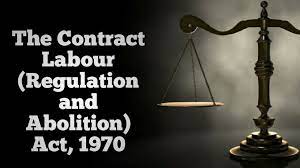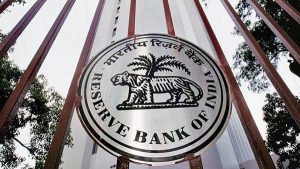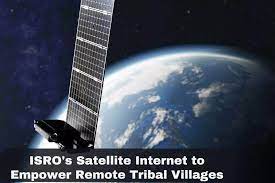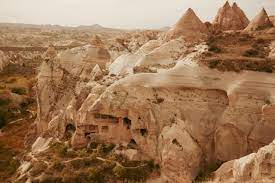Today’s Current Affairs: 16th Mar 2024 for UPSC IAS exams, State PSC exams, SSC CGL, State SSC, RRB, Railways, Banking Exam & IBPS, etc
Table of Contents
Contract Labour (Regulation and Abolition) Act, 1970:

The Supreme Court recently observed that the workers employed to perform perennial/permanent nature of work couldn’t be treated as contract workers under the Contract Labour (Regulation & Abolition) Act, 1970 to deny them the benefit of regularization of a job.
- Contract Labour (Regulation and Abolition) Act, 1970 has been enacted to regulate the employment of contract labour in certain establishments, and to provide for its abolition in certain circumstances, and for matters connected therewith.
- It aims to prevent the exploitation of contract labour and also introduce better conditions of work. It extends to the whole of India.
- Applicable to any establishment in which twenty or more workmen are employed on any day of the of the accounting year as contract labour and any contractor who employs or who employs twenty or more workers on any day of the accounting year.
- Also, it does not apply to the establishments if any work is performed in the intermittent nature.
- It does not apply to establishments situated in the special economic zone (SEZ).
- Every establishment which proposes to employ contract workers for its work is required to obtain a certificate of registration from the appropriate Government.
- Every contractor who has employed twenty or more workers on any day of the month has to obtain a license for engaging contract labour working for any establishment.
- The granted licence will be valid for the specified period and may be renewed from time to time.
- It is the responsibility of the contractor to pay the required wages to each worker employed under contract labour before the expiry of the stipulated period.
- If the contractor fails to make the payment within the stipulated period, then the principal employer shall be liable to make the payment of wages in full or the unpaid balance due.
- The wages are to be fixed by the Commissioner of Labour.
- For contravention of the provisions of the Act or any rules made thereunder, the punishment is imprisonment for a maximum term upto 3 months and a fine upto a maximum of Rs.1000/-.
- The Act provides for the constitution of Central and State Advisory Boards to advise the concerned governments on matters arising out of the administration of the Act.
- The Central or State government after consultation with the appropriate advisory boards may prohibit the employment of contract labour in any process, operation or other work in any establishment.
Sagar Parikrama : Ready To Release Book

The Union Minister for Fisheries, Animal Husbandry and Dairying will release a book and video on “Sagar Parikrama”.
- Sagar Parikrama is an outreach program intended to reach out fishermen community across the entire coastal belt of the country through a predetermined sea route.
- The initiative has been launched to understand the issues, experiences, and aspirations of fishermen and also to create awareness of various schemes and programs of the Government available to fishermen in coastal areas.
- Nodal Ministry: Ministry of Fisheries, Animal Husbandry and Dairying.
- The Sagar Parikrama Yatra spanned over 12 captivating phases in just 44 days.
- The Yatra meticulously navigated the diverse coastal tapestry of India, covering an impressive coastal length of 7,986 Kilometres out of 8,118 Kilometres, touching 3,071 fishing villages in 80 coastal districts of all the Coastal States/UTs.
- During the Sagar Parikrama events, certificates and sanctions related to the Pradhan Mantri Matsya Sampada Yojana (PMMSY) and Kisan Credit Card (KCC) were awarded to progressive fishermen, fish farmers, and young fishery entrepreneurs.
- Literature on various schemes, including PMMSY, KCC and others, was disseminated through print media, electronic media, videos, and digital campaigns to raise awareness among fishers.
National Mission For Edible Oils:

Prime Minister recently inaugurated the first Oil Palm Processing Mill under Mission Palm Oil in Arunachal Pradesh.
- National Mission for Edible Oils – Oil Palm (NMEO-OP) launched by the Government of India in August 2021, NMEO-OP targets a substantial increase in oil palm cultivation and crude palm oil production.
- It is a Centrally Sponsored Scheme with a special focus on the North east region and the Andaman and Nicobar Islands, with a focus on increasing the area and productivity of oilseeds and Oil Palm.
- Targets is to increase the area of oil palm to 10 lakh hectares from 3.5 lakh ha during 2019-20 by 2025-26 (an additional 6.50 lakh ha) and to increase the Crude Palm Oil production from 0.27 lakh tonnes during 2019-20 to 11.20 lakh tonnes by 2025-26.
- Also Increase consumer awareness to maintain a consumption level of 19.00 kg/person/annum till 2025-26.
- The State Department of Agriculture, State Department of Horticulture, Central University, ICAR-Institutions, CDDs, SAUs, KVKs, Central Agencies/Cooperatives, Oil palm processors/ Associations, DD Kisan, AIR, DD, TV channels will be the implementing stake holders of the NMEO-Oil palm.
- The salient features of NMEO-OP include assistance for planting material, inputs for intercropping upto gestation period of 4 years and for maintenance, establishment of seed gardens, nurseries, micro irrigation, bore well/pumpset/water harvesting structure, vermi compost units, solar pumps, harvesting tools, custom hiring centre cum harvester Groups, farmers and officers training, and for replanting of old oil palm gardens etc.
Criminal Case Management System : Inaugrated

Union Home Minister and Minister of Cooperation virtually inaugurated a unique digital Criminal Case Management System (CCMS) and also launches a mobile app ‘Sankalan.
- Criminal Case Management System has been developed by designed by the National Investigation Agency (NIA).
- It will enable the NIA personnel to better coordinate in terrorism and organized crime cases, thereby improving justice delivery.
- It is a user-friendly and easy-to-deploy, customizable, browser-based software to help the State Police forces in their investigations and prosecution.
- It would not only bring standardisation into investigations but also enable easy and streamlined compilation of terror-related data across the country.
- Sankalan app has been designed for navigating through new criminal laws as a bridge between old and new criminal laws.
- This app will work as a comprehensive guide for all stakeholders.
World Gold Council:

The Reserve Bank of India (RBI) bought 8.7 tonne of gold in January, making it the largest purchase by the central bank since July 2022, according to World Gold Council data.
- World Gold Council (WGC) is the market development organisation for the gold industry.
- It is a nonprofit association formed in 1987 whose members comprise the world’s leading and most forward-thinking gold mining companies.
- It was established to promote the use of and demand for gold through marketing, research, and lobbying. It is also the global authority on gold, and they offer comprehensive analyses of the industry.
- Headquartered in London, with operations in India, China, Singapore, and the USA, the WGC covers the markets which comprise about three-quarters of the world’s annual gold consumption.
- It is an advocate for gold consumption.
- The WGC aims to maximize the industry’s potential growth by monitoring and defending existing gold consumption.
- It achieves this by setting up gold standards, proposing policies, ensuring fairness and sustainability in the gold mining industry and promoting the usage and demand for gold for individuals, industries, and institutions.
- It also co-sponsors research in the development of new uses for gold, or of new products containing gold.
- WGC was the creator of the first gold exchange-traded fund.
Human Development Index : Report

India has moved up a rank on the global Human Development Index (HDI), according to the United Nations Development Programme (UNDP) report ‘Breaking the gridlock: Reimagining cooperation in a polarised world’.
Highlights of the recent report:
- The report stated that while India ranked 135 in 2021, it had moved up to 134 in 2022.
- A total of 193 countries were ranked in 2022 and 191 countries in 2021.
- In 2022, India saw improvements across all HDI indicators – life expectancy, education and Gross National Income (GNI) per capita.
- Life expectancy rose from 67.2 to 67.7 years, expected years of schooling reached 12.6, mean years of schooling increased to 6.57 and GNI per capita saw an increase from $6,542 to $6,951.
- While the country has moved up in 2022, it is still behind its South Asian neighbours, such as Bangladesh (129th), Bhutan (125th), Sri Lanka (78th) and China (75th).
What Is Regulatory Sandbox (RS)?

The Reserve Bank of India (RBI) revised the timeline for the completion of various stages of a Regulatory Sandbox (RS) to nine months from the previous seven months.
- A Regulatory Sandbox (RS) refers to live testing of new products or services in a controlled regulatory environment for which regulators may or may not permit certain regulatory relaxations for the limited purpose of testing.
- The RS is an important tool that enables more dynamic, evidence-based regulatory environments which learn from and evolve with, emerging technologies.
- It enables the regulator, financial service providers and customers to conduct field tests to collect evidence on the benefits and risks of new financial innovations while monitoring and containing their risks.
- The objective of the RS is to foster responsible innovation in financial services, promote efficiency and bring benefit to consumers.
- It can provide a structured avenue for the regulator to engage with the ecosystem and to develop innovation-enabling or innovation-responsive regulations that facilitate delivery of relevant, low-cost financial products.
Prime Minister Laid The Foundation Of Sabarmati Ashram Redevelopment Project:

On the 94th anniversary of the Dandi March, the Prime Minister of India laid the foundation for the Sabarmati Ashram Redevelopment Project in Ahmedabad.
- The Sabarmati Ashram Redevelopment Project is a Rs 1,200 crore initiative to restore, conserve, and rebuild the original Sabarmati Ashram founded by Mahatma Gandhi.
- Sabarmati Ashram is situated on the western bank of the Sabarmati River, near the village of Juna Vadaj in Ahmedabad.
- Gandhi set up five settlements during his lifetime, two in South Africa (Phoenix Settlement in Natal, and Tolstoy Farm outside Johannesburg), and three in India.
- Gandhi’s first Ashram in India was established in the Kochrab area of Ahmedabad in 1915, and the others are Sabarmati Ashram (Ahmedabad), and Sevagram Ashram (in Wardha).
- It is currently managed by the Sabarmati Ashram Preservation and Memorial Trust (SAPMT).
- The ashram served as a base for Gandhi’s socio-political activities and experiments with truth and non-violence.
- It witnessed the launch of several seminal movements, including the Dandi March in 1930.
Internet In Remote Tribal Villages (VSAT):

The Ministry of Tribal Affairs plans to collaborate with the Indian Space Research Organisation (ISRO) to deploy V-SAT (very small apperture terminal) stations on a pilot basis for approximately 80 tribal villages in Jharkhand, Madhya Pradesh, Odisha, and Maharashtra.
- The initiative aims to provide Internet services to geographically remote tribal villages that have been historically difficult to connect due to challenging terrain.
- It will facilitate e-governance and improve connectivity in remote areas.
- Apart from this, the Ministry also discussed proposals for partnerships with institutes such as AIIMS Delhi, IIT Delhi, IIM Calcutta, and IISc Bengaluru.
- Partnerships with AIIMS Delhi include conducting advanced research on tribal health issues, particularly on Sickle Cell Anaemia.
- Additionally, plans are in place to establish a training facility with the Indian Institute of Science in Bengaluru to offer courses on semiconductors to tribal students.
World Monuments Fund Watch 2025:

Conservationists plan to propose the Kazhuveli watershed region in Villupuram district, Tamil Nadu, for nomination to the World Monuments Fund Watch 2025 programme.
- This region, spanning 740 sq. km. from Gingee to Marakkanam and up to the Auroville plateau, features an ancient Eri (tank) network crucial for sustaining agricultural practices over millennia.
- The proposal aims to address the decline of this historic water management system and its cultural heritage.
- The World Monuments Watch, launched in 1996, is a biennial program that highlights heritage sites globally nominated by individuals and community-based organizations.
- It is a program by the World Monuments Fund (WMF) that raises awareness about cultural heritage around the world that is threatened by conflict, vandalism, disaster, or neglect.
United Nations Inter-agency Group For Child Mortality Estimation (UN IGME):

The United Nations Inter-agency Group for Child Mortality Estimation (UN IGME) released a report indicating that in 2022, global child deaths before the age of five dropped below 5 million for the first time.
Key Findings:
- Despite this progress, an estimated 4.9 million children died, highlighting the need for further action to end preventable child deaths.
- Disparities in survival exist based on factors such as geographical location, socioeconomic status, and living in fragile and conflict-affected settings.
- Low-income countries and those in fragile situations face higher under-five mortality rates.
- The United Nations Inter-Agency Group for Child Mortality Estimation (UN IGME) is a technical group that produces annual estimates of child and adolescent mortality.
- The UN IGME was formed in 2004 to share data on child mortality, improve methods for child mortality estimation, and report on progress towards child survival goals.
- The UN IGME includes representatives from UNICEF, WHO, the World Bank, and the United Nations Population Division.




